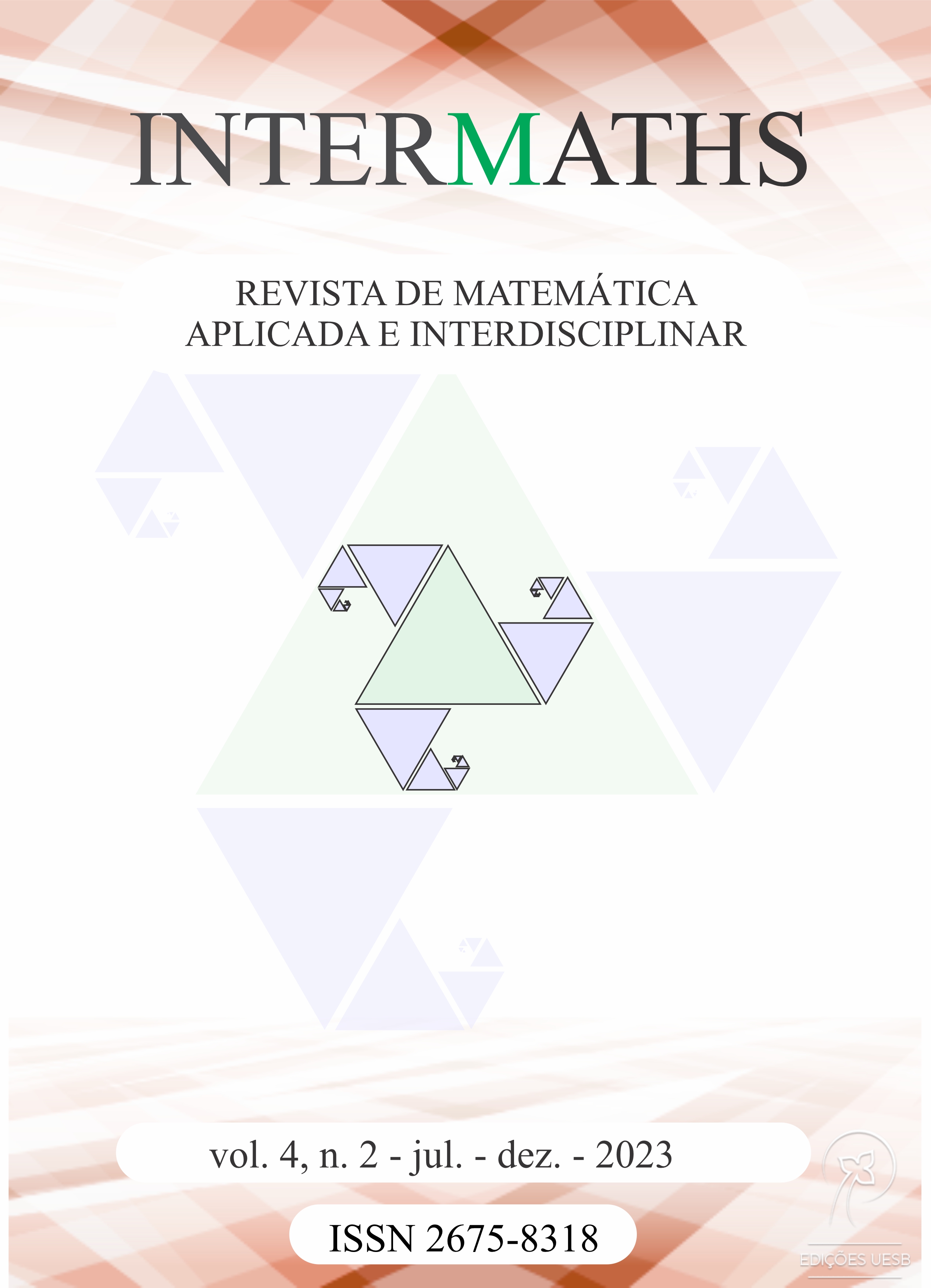A Progressão Geométrica presente nos Fractais: Uma proposta de ensino por meio da Modelagem Matemática
DOI:
https://doi.org/10.22481/intermaths.v4i2.12956Keywords:
Geometric Progressions; Fractals; Mathematical Modeling; High School.Abstract
This work aims to present a proposal for teaching source code progressions using fractals present in nature. The idea arose from experiences during the period of regency in internship activities, through workshops for integrated high school classes at the Federal Institute of Bahia - Campus Salvador. Research points to the difficulties of high school students in generalizing patterns based on observation and reinforces that teachers should think of alternatives to revert this in the classroom. The use of fractals in the classroom leads the student to arouse curiosity, develop creativity and increase playfulness. With that in mind, a teaching proposal for the interpretation of progressions was developed through modeling that starts from the observation of fractals present in nature. The proposal follows the successive mathematical modeling steps of interaction, mathematization and mathematical model, protected by Biembengut [1]. From the proposal created, it is concluded that in addition to enhancing the teaching of grain progressions, bringing another problematic thought to reality, fractals give meaning to the teaching of grain progressions.
Downloads
Metrics
References
M.S. Biembengut. Modelagem Matemática no ensino. São Paulo: Contexto, 2014.
B.F.Garcia, W. F. D. G.; Rezende, V. Ideias base do conceito de função mobilizadas por estudantes do Ensino Fundamental e Ensino Médio. Actio, Curitiba, v. 4, n. 2, p. 127-147, mai./ago. 2019.
M.L.Panossian. Manifestações do pensamento e da linguagem algébrica de estudantes: indicadores para organização de ensino. Dissertação para obtenção do título Mestre em Educação. São Paulo, 2008.
Vale, I. & Pimentel, T. O pensamento algébrico e a descoberta de padrões na formação de professores. Escola Superior de Educação do Instituto Politécnico de Viana do Castelo, Portugal, 2013.
Barbosa, R. M. B.Descobrindo a Geometria Fractal – para a sala de aula – 3. ed. – Belo Horizonte: Autêntica Editora, 2005.
Brasil. Ministério da Educação e Cultura. Parâmetros curriculares nacionais: Ensino Médio. Volume 2: Ciências da Natureza, Matemática e Tecnologia. Brasília: MEC, 2006.
Brasil. Ministério da Educação. Base Nacional Comum Curricular. MEC, 2017
B.B. Mandelbrot, The fractal geometry of nature, New York: W.H. Freeman and Company, 1977.
T. A. de Assis, J. G. V. Miranda, F. B. Mota, R. F. S. Andrade, C. M. C. de Castilho, “Geometria Fractal: propriedades e características de fractais ideias”, Revista Brasileira de Ensino da Física, v. 30, n. 2, pp 2304.1 - 2304.10, 2008
P. Prusinkiewicz, A. Lindenmayer, The algorithmic beauty of plants, Springer Science & Business Media, 2012.
R. C. Bassanezi. Modelagem Matemática: teoria e prática. São Paulo: Contexto, 2015.
Ponte, J.P. Práticas Profissionais dos Professores de Matemática. Instituto de educação. Lisboa, 2008.
GEOGEBRA. Site: acesso em 20 de abril de 2022.
Inep. Instituto Nacional de Estudos e Pesquisas Educacionais Anísio Teixeira. Sobre o ENEM. (2015) Disponível em:
<http://portal.inep.gov.br/web/enem/sobre-o- enem> acesso em 20 de abril de 2022.
Published
How to Cite
Issue
Section
License
Copyright (c) 2023 INTERMATHS

This work is licensed under a Creative Commons Attribution 4.0 International License.
- Responsibility: The scientific content and the opinions expressed in the manuscript are the sole responsibility of the author(s).
- Copyrights: INTERMATHS.
- All content of Revista INTERMATHS/INTERMATHS journal is licensed under a Creative Commons - Atribuição 4.0 Internacional







